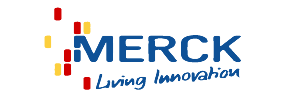Why we want to improve it?
According to the experimental record of Freiburg, the success rate is higher than 95%(32/33). However, this result, to some degree, lacks statistical significance.
In the result section, they emphasize that there is a light band at 1200bp, which they believe could indicate that the Golden Gate connection works well. However, after conducting several experiments by ourselves, we find that the key point to indicate whether Golden Gate connection works is not the band at 1200bp. If the band is not clear and specific in the gel, it indicates the experiment doesn’t go well. We can easily find several light bands under the band of 1200bp. Moreover, the second light band is somewhat lighter than the band at 1200bp. Although the Freiburg can explain the results with the repeatability of the TALE sequence, we suppose that the possibility of the mismatch of the sticky ends still can’t be excluded. Frankly speaking, we try to believe that they really made it, but if the success cannot be repeated, there must be something wrong with their system.[https://2012.igem.org/Team:Freiburg/Project/Experiments Detailed results please see 2012 Freiburg wiki.]
- Freiburg's protocol
- Restriction enzyme digestion of plasmid and TAL repeats and gel extraction respectively. By the mole ratio, plasmid to TALE is 1 to 5 and TALE to TALE is 1 to 1. Ligation with T4 ligase in 22 ℃over night.
- The same ratio of plasmid and TALE repeat, but add the TALE repeats one by one and ligation in 22 ℃, 30 minutes
- Every two parts connect at one time, and try to make three intermediates of 400bp, and then mix the plasmid to make the complete TALE.
- The same ratio and ligation with the program of 22℃ 2min, 40℃ 30,25 repeats.
Unfortunately, all of our attempts failed. We didn’t manage to make a complete TALE, or even make two of them together. However, what is important for us is that when we try the 5th protocol, we notice an unexpected result. When we analyze the sequence result, we find that our left adaptor, 1st part and right adaptor connect together. Why do we get this result? We notice that their sticky end is TGAC, GCTC, and ACTC. That is to say, GCTC and ACTC connect with each other by mistake. In another word, if the sticky ends are very similar, they probably connect with each other. Although we failed again, the result gives us confidence to debug 2012 Freiburg's parts.
 "
"







